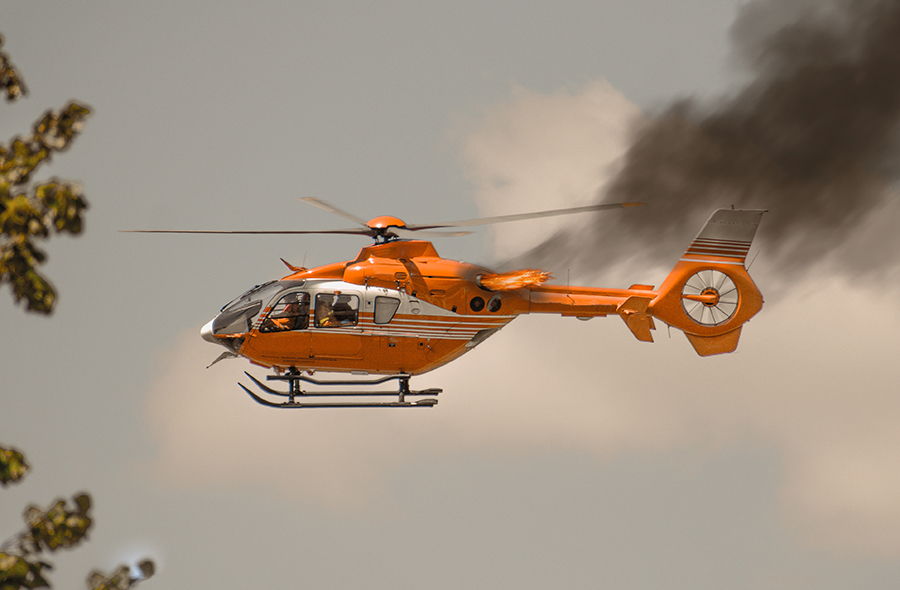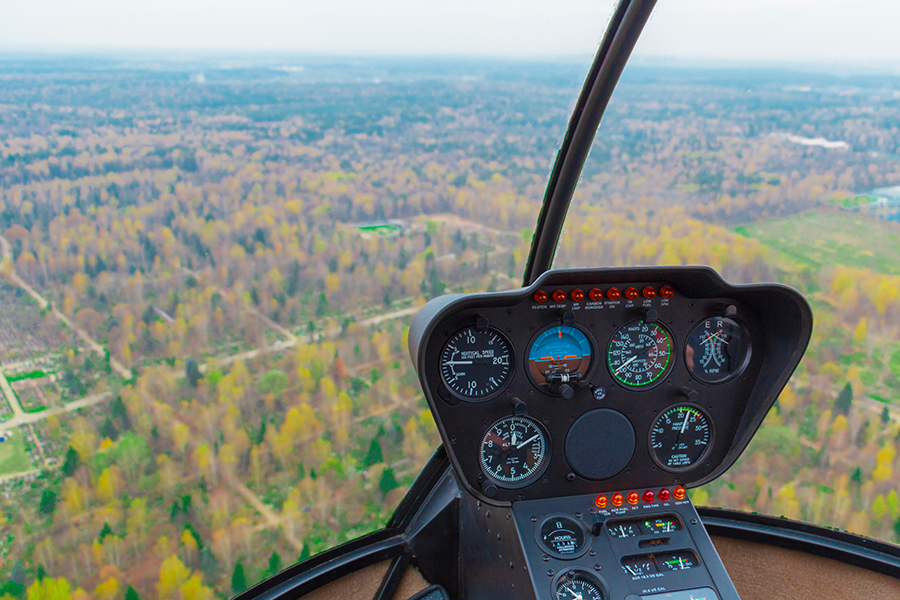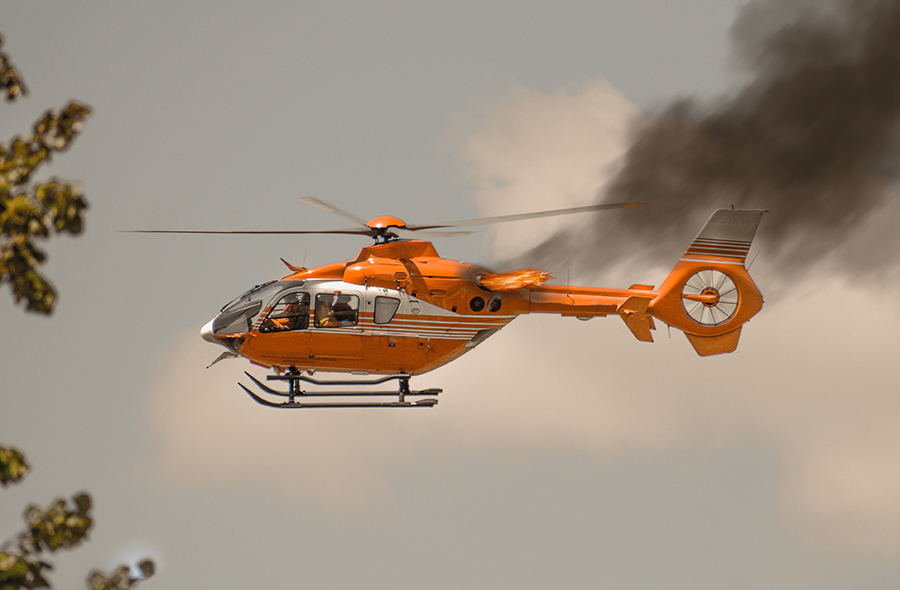-
1) Human Error
- Pilot Error
- Air Traffic Control Errors
- Errors by Maintenance Personnel
-
2) Technical Problems
- Loss Of Main Rotor Control
-
Loss of Tail Rotor Function
- Component or System Failure
- Engine failure
- Fuel Starvation or Exhaustion
-
3) Environmental Factors
- Crashes Caused By A Number Of Different Factors – The Swiss Cheese Analogy
-
Conclusion
Helicopters have a reputation among the general public for being dangerous, much more so than airplanes. But in fact, this is not the case. Published figures vary, but they all tend to show that while helicopters do crash slightly more often than planes, the difference is very small. Helicopters are not inherently dangerous. But nevertheless, helicopter crashes do happen. So…why?
Helicopters crash for a wide variety of reasons. However, the causes of rotary aircraft crashes can be broadly classified into just three main categories. These are as follows:-
- Human Error
- Technical Problems
- Environmental Factors
So let us now take a look at each of these in turn.
1) Human Error
Human error can be roughly defined as mistakes caused by the person operating the helicopter, ie what is generally called pilot error. But it also includes mistakes or negligence by some other party, such as air traffic controllers or maintenance personnel.
Pilot Error
Pilot error is by far the most common cause of plane crashes, accounting for about 50% of accidents. These figures are for fixed-wing aircraft, but the statistics are very similar for helicopters. This might seem surprising at first glance, as pilots are highly trained individuals who learn not to make mistakes. But on the other hand, they are also simply ordinary human beings, and they have an extraordinary amount of work to do and information which they need to process when flying a complicated modern aircraft. There are numerous opportunities for things to go wrong. Indeed, efforts are now constantly being made to ensure that pilots do not become too fatigued, and are not overloaded by work pressures or complicated systems, in the hope of minimizing pilot error.
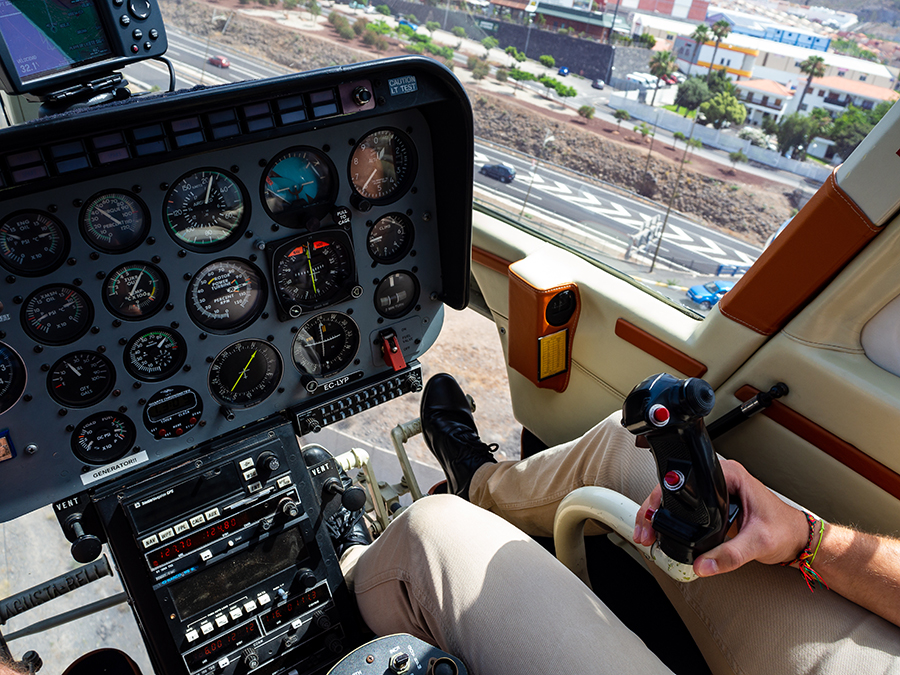
There are reasons why the pilot error is even more likely in a helicopter than in an airplane. Firstly, most helicopters require more hands-on flying than fixed-wing aircraft. This is not necessarily true of the more sophisticated ones used commercially. But many rotary aircraft, particularly the small types flown by private helicopter pilots, need to be constantly flown by hand; they cannot be trimmed and left to themselves as can most airplanes. Indeed, this is their attraction, and those who like hands-on flying are often attracted to helicopters. But it means that helicopter pilots cannot reduce their workload by trimming the aircraft and leaving it alone. In effect, they have a larger workload from the start, and while that doesn’t matter in normal circumstances, if any other problem occurs it could make a difference.
In addition, helicopters can land almost anywhere. This fact is a massive advantage of course. But maybe it can also be a cause of accidents, if it tempts a pilot to just push on a bit further, to leave things a little too late. After all, unless you are in the middle of the countryside with no obstacles and flying into the wind, you really can’t just plonk your helicopter down anywhere! Usually, a little preparation is needed, a bit of a ‘recce’ if not a proper circuit. It is easy to leave everything a little too long, and a sensible precautionary landing becomes an accident site.
Finally, the fact that helicopters can easily be flown at low levels and in marginal weather often tempts pilots to take more risks than most airplane pilots would. They may be inclined to push on in circumstances where a fixed-wing pilot would find an airport and land. And sometimes, even in a helicopter, this does not work out well.
Air Traffic Control Errors
Errors by well-trained air traffic controllers are rare, but they do happen, They are more common in high-density environments such as the air close to airports, and among airplane traffic rather than helicopters. But nevertheless, air traffic controllers are human, and like pilots, they can make mistakes. And just occasionally, these can lead to accidents.
Errors by Maintenance Personnel
Maintenance engineers are also highly trained, and rarely make mistakes. But again, it does happen now and then. This is why pilots are trained to check especially carefully after a helicopter comes back from routine maintenance. It is not unknown for something to be done incorrectly during maintenance, or even for a small tool to be left somewhere inside the helicopter. Loose objects in any aircraft are a bad thing and can lead to accidents, but they can be even more dangerous in a helicopter than in any other aircraft.
2) Technical Problems
Contrary to what many people think, crashes caused by mechanical problems in helicopters are quite rare. But of course, they do occasionally occur. And when they do, they can be very serious. Indeed, mechanical failure is the peril most feared by helicopter crews because of its potential severity. For example, while a twin-engined passenger jet can fly on one engine or with a number of other failures, the failure of a key helicopter component such as the rotor and rotor shaft, main gearbox, or tail rotor often proves fatal. In no other type of flying machine is so much stress placed on single components. Of course, not all of these part failures are as dangerous as others. Let us take a look at some of them in more detail.
Loss Of Main Rotor Control
If there is any damage to the main rotor blade, or a pilot loses the ability to control a helicopter’s rotation or pitch, this can result in a loss of control. This can be very difficult to deal with and is likely to result in a crash.
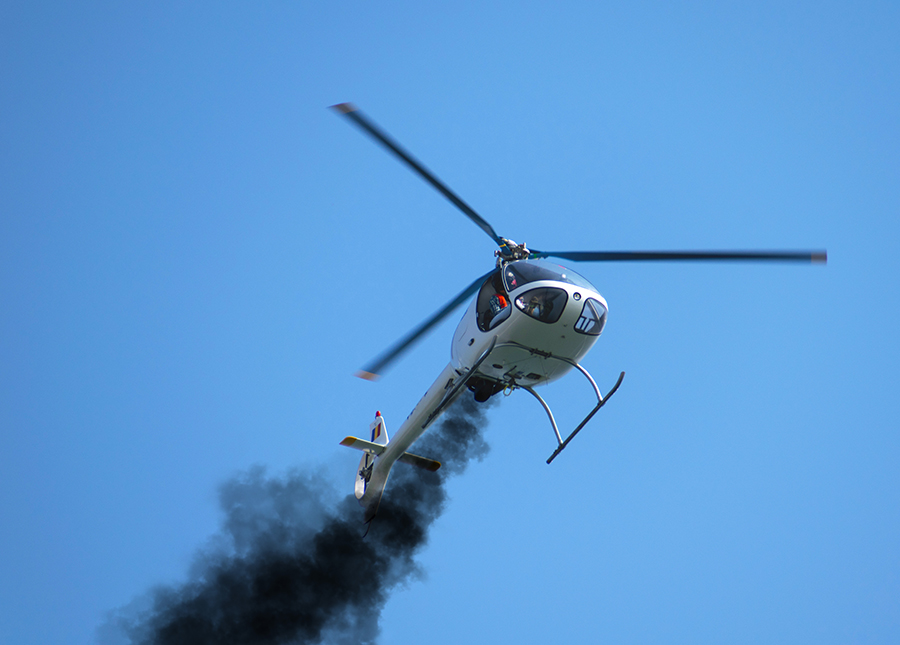
The main rotor can be easily damaged. Due to the unique ability of a helicopter to be able to hover and fly at much lower altitudes than fixed-wing aircraft, it can find itself near surroundings that can act as obstacles. If one of these obstacles hits the main rotor, it can damage it and cause a catastrophic loss of control for the pilot. Such obstacles may include trees, radio and cell phone towers, wire strikes, and even mountains or buildings.
Loss of Tail Rotor Function
The tail rotor is designed to prevent a helicopter from spinning in the opposite direction to the main rotor blade. When a pilot loses control of the tail rotor, this can result in a total loss of helicopter control. Pilots are taught in training to deal with tail rotor failure. But it involves quite a difficult maneuver, and sudden loss of tail rotor function can easily result in a crash.
Component or System Failure
When a helicopter experiences component or system failure, especially without any prior warning, the results can be catastrophic. And any part that is replaced, installed, or fitted on the helicopter has the potential to fail. Gearbox failures, in particular, are not that uncommon, which is perhaps not surprising, given the enormous amount of power passing through them, and the huge stresses placed on them in large helicopters. Indeed, gearbox failures have been the cause of a few well-documented crashes involving large commercial helicopters.
An example of helicopter gearbox failure causing a crash occurred in Norway in 2016. Norwegian investigators said a fatigue fracture in the main gearbox was the most likely cause of a fatal Airbus Helicopters H225 crash near on April 29th, and they said that the fracture propagated in a manner unlikely to be detected by existing mandatory or supplementary systems. Such occurrences are, thankfully, very rare.
Engine failure
Many people think that an engine failure in a helicopter always leads to a crash and certain death! In fact, this is not the case in most instances. Pilots are trained to deal with helicopter engine failures, and in a single-engine helicopter, this involves putting the helicopter into ‘autorotation’, a maneuver involving a controlled power-off descent followed by a controlled landing. It is not a simple thing to do successfully, but on the other hand, it is not all that difficult either.
In a twin-engined helicopter, things are even easier, as the controlled flight on one engine is quite possible within certain weight limits, although hovering could be difficult and a run-on landing, requiring slightly more skill, may be required. But overall, contrary to a general belief among the public, engine failure is not a very common cause of helicopter crashes.
Fuel Starvation or Exhaustion
Fuel starvation occurs when fuel is not reaching the engine, while fuel exhaustion means the helicopter is running out of its usable fuel supply. In either case, whether it be due to improper planning, a stuck fuel gauge needle, or a technical failure, running out of fuel can quickly spell disaster if a helicopter is unable to quickly make an emergency engine-off landing. But this is quite often possible, as explained above for engine failures.
3) Environmental Factors
Environmental factors are simply those that include the natural world, like bad weather, collisions with birds, or similar scenarios. Flying in snow, rain, sleet, fog, or any other scenario where visibility is impaired is a common reason as to why helicopters crash. Other environmental factors include bird strikes, which are more likely to happen in a helicopter than in an airplane due to the fact that helicopters are so often flying at lower altitudes. Then there are causes involving other aircraft, such as mid-air collisions or wake turbulence.
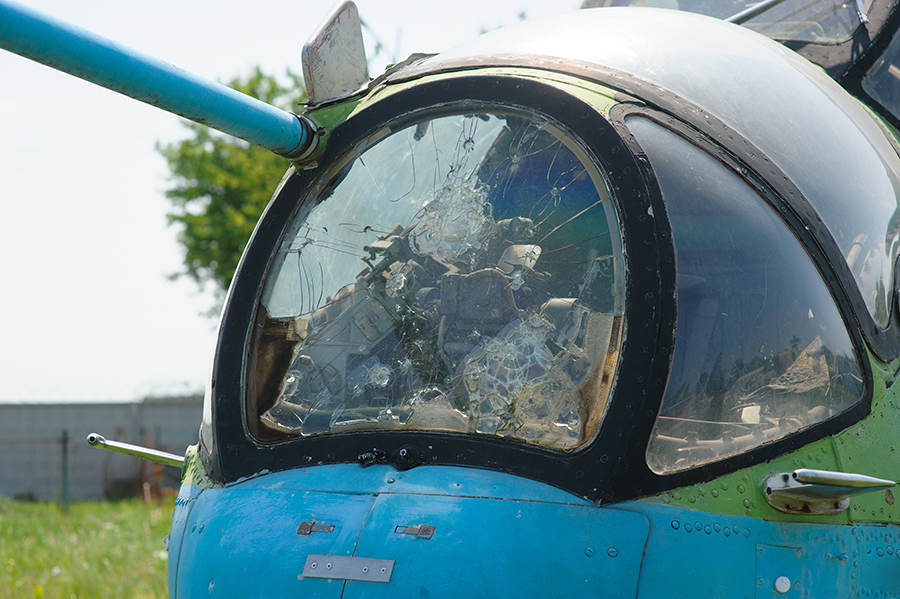
Bad weather is by far the most common environmental factor causing helicopter crashes. As explained above, helicopter pilots are more likely than airplane pilots to press on when the weather deteriorates, despite it being easier for them to land off-airfield. Indeed, there are many well-documented cases of helicopter pilots continuing despite deteriorating weather, and then crashing. Usually, they have simply left it too late to land, thinking that they can land immediately if it becomes necessary. But if the weather becomes too bad, a safe landing may be impossible.
Crashes Caused By A Number Of Different Factors – The Swiss Cheese Analogy
It is often said that aircraft never crash because of one single issue. It is almost always a combination of factors that lead to an accident, and therefore it is very difficult to provide accurate statistics as to what the cause of an aircraft crash is. This type of scenario is frequently compared to the holes in a Swiss cheese such as Gruyere, and it is said that when the holes in the cheese line up, then an accident occurs. This is as true for helicopters as it is for airplanes.
To take an example, if a helicopter suffers a serious technical problem, like an engine failure, this need not result in an accident, as we have explained above. However, if it is subsequently mishandled by the pilot, it could easily result in a crash. Does that count as human error or mechanical breakdown? The engine failure on its own should not have meant the helicopter crashed, as it could have been handled correctly by the pilot.
Let us take another example of more than one factor causing a crash. Perhaps the weather worsens, the pilot decides to divert, and then realizes that the GPS is not working properly. Maybe a long flight has caused the pilot to suffer fatigue, and suddenly he has to cope with complicated ATC instructions in crowded airspace. In a situation like this, the pilot could make a mistake and have an accident. It is difficult to identify the specific cause of this disaster, as it is the odds stacking up like this which can lead to the final crash.
Conclusion
In summary, the causes of helicopter accidents are many and varied, and perhaps to a large extent comes down to the quality of the pilots ‘go/no-go decisions. As a helicopter pilot, I realized a long time ago that we all need to look more closely at what every flight involves. For example…perhaps the weather is marginal, but you know you have the experience to cope with that. But…are you also flying an unfamiliar helicopter? How well do you know the route? Do you have passengers who aren’t used to flying? Have you programmed the GPS correctly? Are you planning to use your mobile phone or to text? Are you likely to get distracted in any other way? None of these alone may matter, but together, are the odds stacking up? Could that fact lead to a crash?
When it comes to helicopter flying, perhaps we need to be much more aware of what we can safely do rather than what we’d like to be capable of. We need to look at the whole picture and be honest with ourselves. And…maybe we all need to be a whole lot braver when it comes to making a decision NOT to fly!
